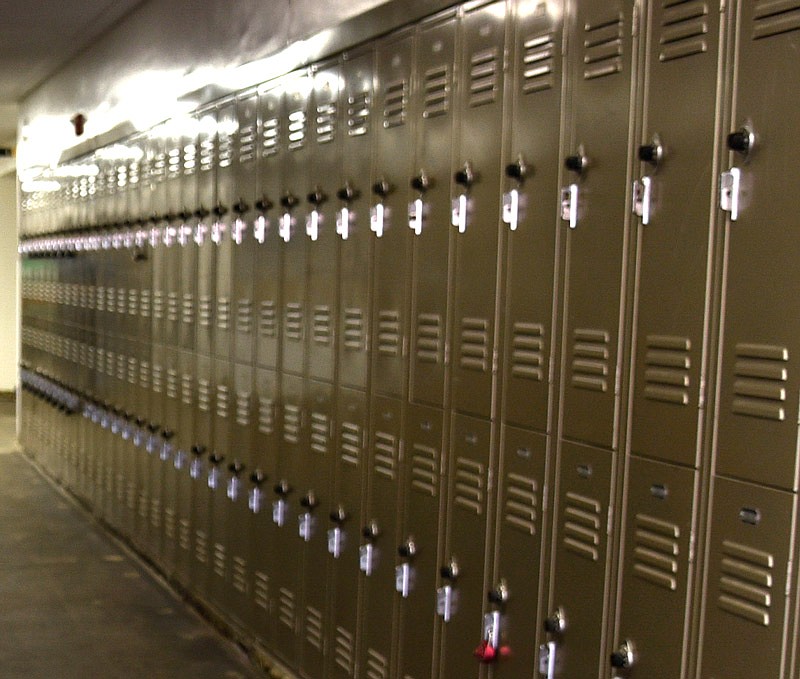The News Tribune is offering this article free to all readers because it includes information important to public safety and health in our community.
As the back-to-school season approaches in an uncertain fall amid the COVID-19 pandemic, Missouri's state education and health departments have released more guidance for schools on how to prevent or react to infections at school.
Gov. Mike Parson - after having met in the preceding days with school district leaders across the state, including in Jefferson City last week - said Wednesday "there is no one size fits all" approach to reopening, and plans will be based on each district's unique needs.
On Monday, the Missouri departments of Elementary and Secondary Education and Health and Senior Services released updates to previous school reopening guidance that focused on proactive protocols for screening, physical distancing, and masks or face coverings, as well as reactive strategies to address symptomatic people at schools, positive cases and contact tracing.
The new guidance recommends K-12 schools "should implement a process for daily screening for symptoms of and exposure to COVID-19. Parents and caregivers should be empowered to screen children for symptoms at home, prior to coming to school, and should be provided with a checklist" that includes certain symptoms and exposure risks.
Students with symptoms are advised to not attend school and consult with their health care provider, and students who are diagnosed with COVID-19 may return to school after at least 10 days have passed since symptom onset, they have had three days with no fever and their other symptoms are improving.
"Return to school for children with an alternate diagnosis is at the discretion of their health care provider and/or the school nurse," according to the latest state guidance.
It's recommended that children be visually screened for signs and symptoms of illness as they enter school and/or their classroom. School leaders can perform additional screenings such as temperature checks, but it's advised these measures should not create bottlenecks at entrances, so as to avoid students grouping close together.
Close contact that may lead to the spread of COVID-19 is considered being within 6 feet of someone infected for more than 15 minutes. If 6 feet of distance cannot be maintained, a minimum of 3 feet is desired.
It's also recommended that school staff screen themselves at home and be screened as they enter buildings.
Visitors are encouraged to be limited this school year; parent-teacher conferences, disability educational plan meetings and discipline conversations may all be done remotely. Visitors are encouraged to otherwise be screened, have their movements and time of entry and exit be kept on record, and perhaps be limited to a designated visitor space or room.
Assigned seating on buses and having the windows open, when safe to do so, are among measures that might be used to reduce the risk of infection on buses.
Having students eat in classrooms instead of in a cafeteria is also encouraged.
"Schools may consider bringing meals directly to classrooms but should make efforts to ensure nutritional value and appealing menu choices are not sacrificed," according to the state's guidance.
Older students may also be given options of lunch outside or in a gym, with proper supervision.
The guidance - as with what's been previously given - continued to state masks or face coverings are not recommended for young children, but could be effective with middle and high school-aged children.
Anyone who does have a fever of at least 100.4 or other symptoms at school is recommended to be immediately isolated and to wear a medical-grade mask until they can leave the building to seek medical care - for students, being walked out of the school to their parent or guardian.
That isolation space is recommended to be separate from the nurse's office, and to use "shower curtain-type barriers" to separate multiple symptomatic students and prevent cross infection.
Individuals who do test positive are "not (to) be identified in communications to the school community at large."
When it comes to the possibility of closures, schools are recommended to consult with their local health departments about if a school needs to close and how long that might last. In the case of conflicting guidance from multiple health departments in a district's attendance area, "the more restrictive guidance should be followed, whenever possible."
A closure may also be limited to a specific part of a building linked to an outbreak, to be cleaned and have contact tracing done.
Contact tracing will be led by local health departments, but schools should be ready to assist.
"Schools and districts should prepare distance learning plans for both short and long term classroom, building and district closures," according to the guidance.
When it comes to a shift to remote learning, districts are encouraged to make that decision in consultation with their local health department: "At this time, there are no absolute thresholds in place at the state level that trigger certain actions. It will be critical for schools to track cases and clusters in their school community, as this may be the most important factor in determining if a shift to an alternate instructional model for some or all students is necessary."
Another topic brought up in recent conversations between Parson and school leaders was whether the Missouri National Guard might be used to provide substitute teachers, if necessary.
Parson said Wednesday: "I don't know that we're going to implement the National Guard for substitute teachers, yet," because for one, some Guard members may already be full-time classroom teachers.
However, "I think we're looking at different waivers we might be able to do to help to get more substitute teachers in (schools), whether that be student teaching or who's available out there, maybe teachers who are retired," Parson added.
The full updates to reopening guidance released this week is available at dese.mo.gov/sites/default/files/COVID-MO-K12-Reopening-Guidance.pdf.

